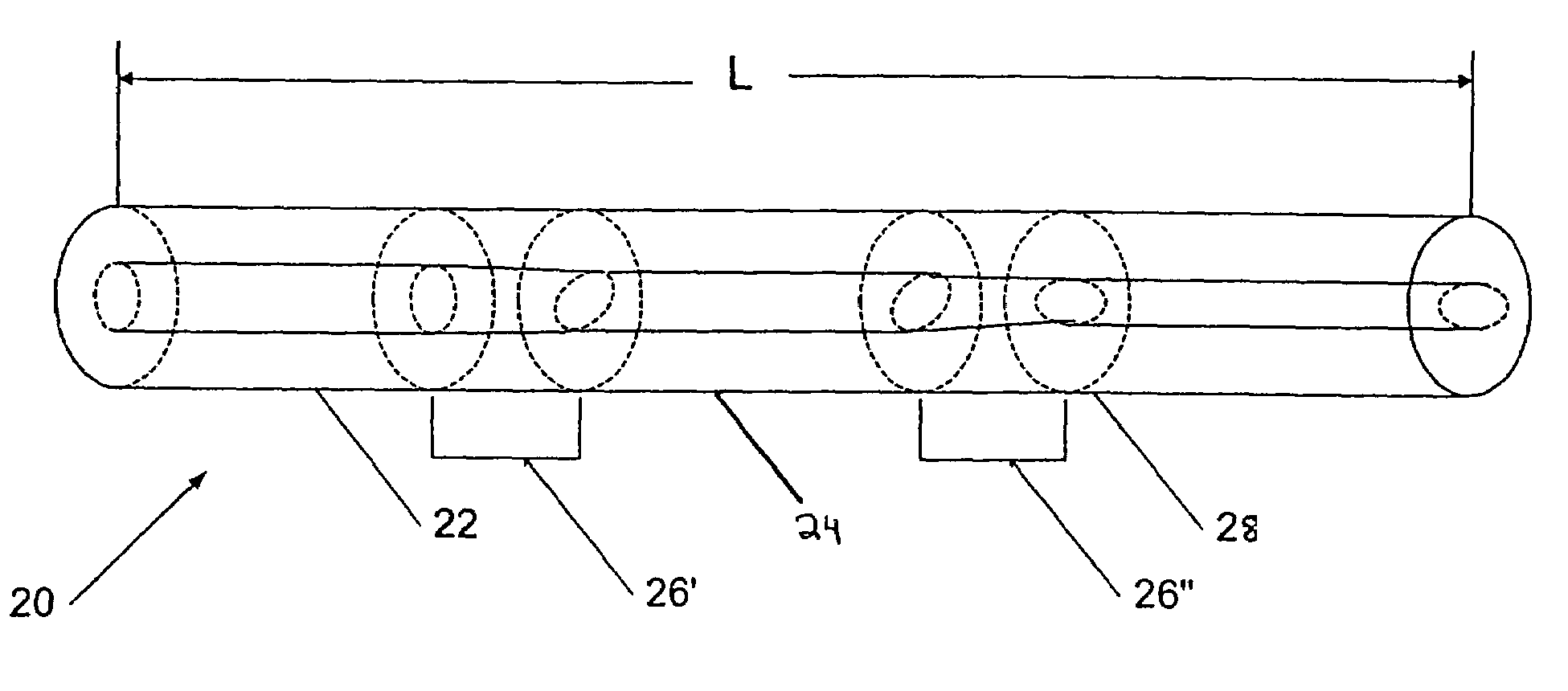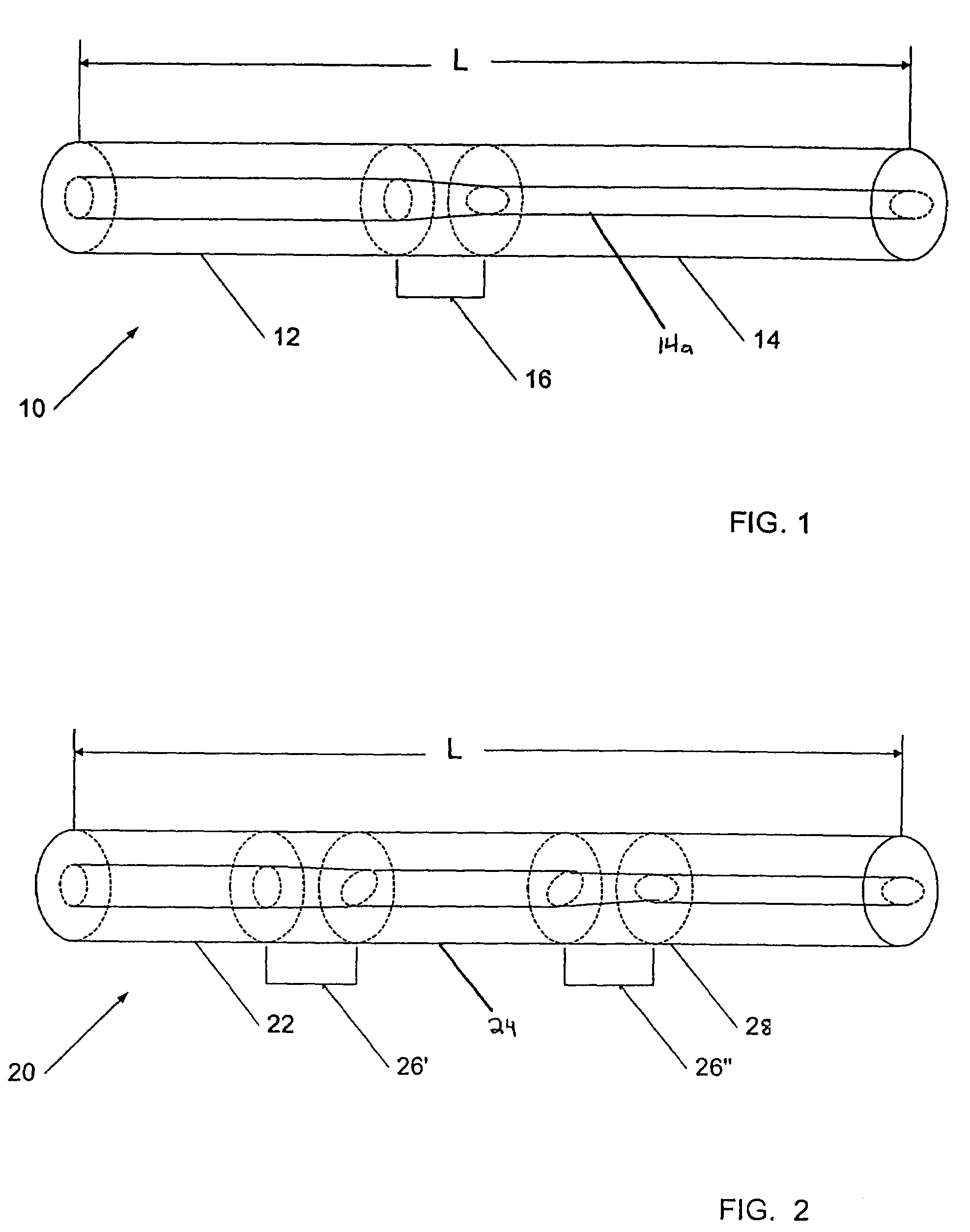Reduction of linear birefringence in circular-cored single-mode fiber
a single-mode fiber and linear birefringence technology, applied in the field of fiber optics, can solve the problems of reducing the efficiency of fiber or coil fabrication process, affecting the quality of fiber, and reducing so as to reduce the effect of linear birefringence and reduce linear birefringen
- Summary
- Abstract
- Description
- Claims
- Application Information
AI Technical Summary
Benefits of technology
Problems solved by technology
Method used
Image
Examples
first embodiment
[0022]Referring now to FIG. 1, in the invention, a length L of an optical fiber 10 may be segmented into two sections 12 and 14, with an approximate 90° splice or twist 16 introduced between the sections 12 and 14. The individual sections 12, 14 may run straight and may not include twists. The light waves propagate in the fiber 10 across both sections 12 and 14 without changing their physical general orientation, but the axis x—x of the fiber ellipse 12a of fiber section 12 will rotate by approximately 90° at the splice 16 to axis x′—x′ of fiber ellipse 14a of section 14. This may have the effect of interchanging the effects of the linear birefringence between the two orthogonal waves. By the time that the two waves introduced at one end of the fiber section 12 reach the far end of the second fiber section 14, the overall retardation may be the same for each mode for the case having even numbers of fiber sections, such as the two sections of FIG. 1. This may have the effect of elimi...
second embodiment
[0025]FIG. 2 depicts a second embodiment using a lesser angle, for example, 45°. In this embodiment, a length L of an optical fiber 20 may be segmented into several sections. The illustrated example depicts three sections 22, 24, and 28, with two 45° splices or twists 26′, 26″ introduced along the fiber length. Successive twists would preferably continue in the same sense of rotation, until the total accumulated twist angle is approximately 90°. Thereafter, the sense of rotation may be reversed. The individual light waves will continue to propagate in the fiber 20 across the three sections 22, 24 and 28 without changing their physical orientation, but the axis y-y of the fiber ellipse 22a of section 22 will rotate by approximately 90° after traversing both splices 26′, 26″ to axis y′—y′ of the fiber ellipse 28a of section 28.
[0026]If this occurs often enough, it may minimize the effects of linear birefringence and may stabilize the fiber sensitivity to the Faraday effect. In the emb...
PUM
 Login to View More
Login to View More Abstract
Description
Claims
Application Information
 Login to View More
Login to View More - R&D
- Intellectual Property
- Life Sciences
- Materials
- Tech Scout
- Unparalleled Data Quality
- Higher Quality Content
- 60% Fewer Hallucinations
Browse by: Latest US Patents, China's latest patents, Technical Efficacy Thesaurus, Application Domain, Technology Topic, Popular Technical Reports.
© 2025 PatSnap. All rights reserved.Legal|Privacy policy|Modern Slavery Act Transparency Statement|Sitemap|About US| Contact US: help@patsnap.com


